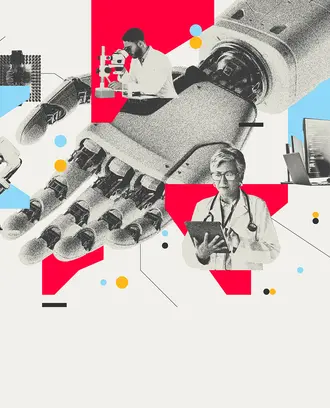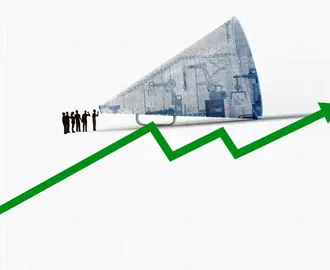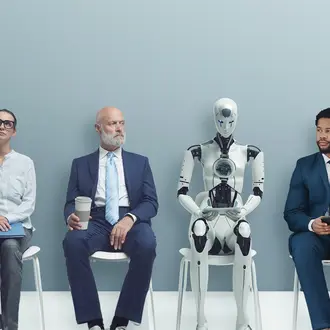Credit: Stephen Sauer
Historians are likely to label 2023 as the year of labor’s discontent in the United States. They will note that:
- Entertainers and writers were engaged in long strikes to restructure how they were paid paid in the streaming media environment.
- At United Parcel Service, the Teamsters union used its buildup of a very credible strike threat to achieve one of the largest wage increases in years for full- and part-time workers.
- Strikes erupted across the nation to the point that this season was labeled “Hot Labor Summer.”
- Strike threats were pending in other big settings, including the auto industry and health care.
- Rank-and-file union workers were sending clear messages that they expected to reclaim wages lost to inflation and were ready to reject tentative agreements that fell short of meeting their expectations.
- Worker interest in, efforts to organize, and public support for unions all continued to reach levels higher than seen in a number of years.
- Employer violations of labor law also escalated to the point that the National Labor Relations Board issued a “new framework” for organizing to ensure that unions would be established if that was what the majority of workers wanted.
- Union and nonunion workers continued to engage in collective actions to gain a stronger voice on issues such as scheduling and time off, dignity and respect, use of AI and other advancing technologies, and social issues.
- Low-wage workers gained significant ground thanks to the combined effects of the Fight for $15 wage campaign, tight labor markets, and state-level increases in minimum wages.
But could these events turn out to be just a momentary demonstration of militancy and bargaining power — or are they the opening salvos to sustained efforts that will achieve a new, more equitable, and more productive social contract governing work?
How we got here
To answer this question, let’s first learn from history. Where did the old post-World War II social contract that ushered in decades of economic and sustained wage growth get its start?
Between 1948 and 1950, the United Auto Workers and General Motors negotiated a landmark agreement called the Treaty of Detroit that increased wages in line with increases in the cost of living and growth in national productivity. This agreement set the norms for collective bargaining in other companies — not only in the auto industry but across the economy — and put pressure on nonunion companies to match the new norms. It also laid the foundation for later negotiations for improvements in pensions, health insurance, and income security benefits, in anticipation of a wave of increased automation.
Where we are
Flash forward to today. The recently negotiated agreement by the Teamsters and UPS demonstrates that workers and their unions are determined to reach sizable wage increases to make up for the ground lost to recent inflation, and to share in their employers’ profits more fairly. The autoworkers are justifying their demands for a very large wage increase for new hires and incumbent workers to catch up with inflation, gain a more equitable share of company profits, and match the high pay increases granted to their company CEOs. The same worker and union refrain is being heard in industries such as hospitality, higher education, and health care.
Related Articles
But a new social contract will also need to address the broader set of issues motivating worker activism today. Our research shows a persistent gap between workers’ actual experiences and their expectations of having a voice in issues such as dignity and respect, equity and discrimination, the values of their employers, and their relationships with customers.
Advances in artificial intelligence and other technologies are putting another dimension of a new social contract in play.
The central issue of the long strikes by the Writers Guild of America and entertainers represented by Screen Actors Guild-American Federation of Television and Radio Artists is how to restructure their compensation formulas as streaming reduces the residual income they previously earned from reruns of TV programs. And as generative AI becomes a reality in this industry and others, more proactive technology agreements will be needed that provide workers and their unions with a more direct and powerful voice in shaping how new technologies will be designed and used in their industries and workplaces.
Some 60% of workers fear retaliation from their employer if they try to organize.
None of this is an easy lift, for workers or employers. Workers continue to face fierce resistance to organizing from most employers. Worker activists have been singled out and fired, and our research shows that about 60% of workers fear retaliation from their employer if they try to organize. And about a third of unions fail to get a first contract within three years after workers vote in favor of organizing.
Some employers, like Starbucks and Amazon, have repeatedly been cited by the NLRB for illegal labor practices in the face of unionization efforts by employees. That led to the NLRB decision to require companies that commit serious violations of labor law during a union election to recognize the union. Hopefully, this will encourage more employers to shift from knee-jerk resistance to workers’ organizing efforts to working with unions to build high-quality labor-management relationships.
There is a lot on the table in the year of labor’s discontent. If this level and scope of activism continues and produces results that then get other workers, unions, and employers to match them, future historians might indeed record this year as the dawn of a new social contract fitted to today’s workforce, technologies, and economy.
Read next: When workers want to organize: 4 ways management can respond



